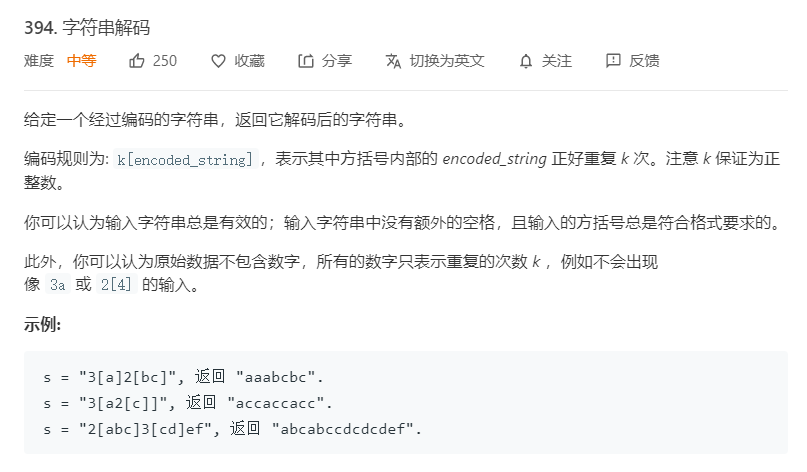394 字符串解码
下面是题目

下面是题目给出的模板
1 | class Solution { |
题解
- 这题不看题解我真滴很难做,思路是有一点,但是要把它编程代码其实不简单!贴一下大佬的代码
1 | class Solution { |
1 | /*我们拿s = "3[a2[c]]"手动模拟一遍 |
利用栈解法
1 | //利用辅助栈的解法,同样用两个例子分析 |
1 | /* |

1 | class Solution { |
1 | class Solution { |
1 | /*我们拿s = "3[a2[c]]"手动模拟一遍 |
1 | //利用辅助栈的解法,同样用两个例子分析 |
1 | /* |